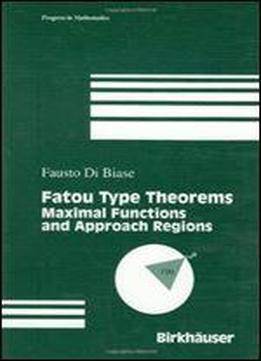
Fatou Type Theorems: Maximal Functions And Approach Regions
by Fausto Di Biase /
1997 / English / PDF
12.5 MB Download
A basic principle governing the boundary behaviour of holomorphic func tions (and harmonic functions) is this: Under certain growth conditions, for almost every point in the boundary of the domain, these functions ad mit a boundary limit, if we approach the bounda-ry point within certain approach regions. For example, for bounded harmonic functions in the open unit disc, the natural approach regions are nontangential triangles with one vertex in the boundary point, and entirely contained in the disc [Fat06]. In fact, these natural approach regions are optimal, in the sense that convergence will fail if we approach the boundary inside larger regions, having a higher order of contact with the boundary. The first theorem of this sort is due to J. E. Littlewood [Lit27], who proved that if we replace a nontangential region with the rotates of any fixed tangential curve, then convergence fails. In 1984, A. Nagel and E. M. Stein proved that in Euclidean half spaces (and the unit disc) there are in effect regions of convergence that are not nontangential: These larger approach regions contain tangential sequences (as opposed to tangential curves). The phenomenon discovered by Nagel and Stein indicates that the boundary behaviour of ho)omor phic functions (and harmonic functions), in theorems of Fatou type, is regulated by a second principle, which predicts the existence of regions of convergence that are sequentially larger than the natural onesOne of the main tasks in the understanding of the boundary behavior of harmonic (holomorphic) functions in domains in real (complex) Euclidean spaces is to describe the regions of approach to the boundary, along which the functions converge to their boundary values.











